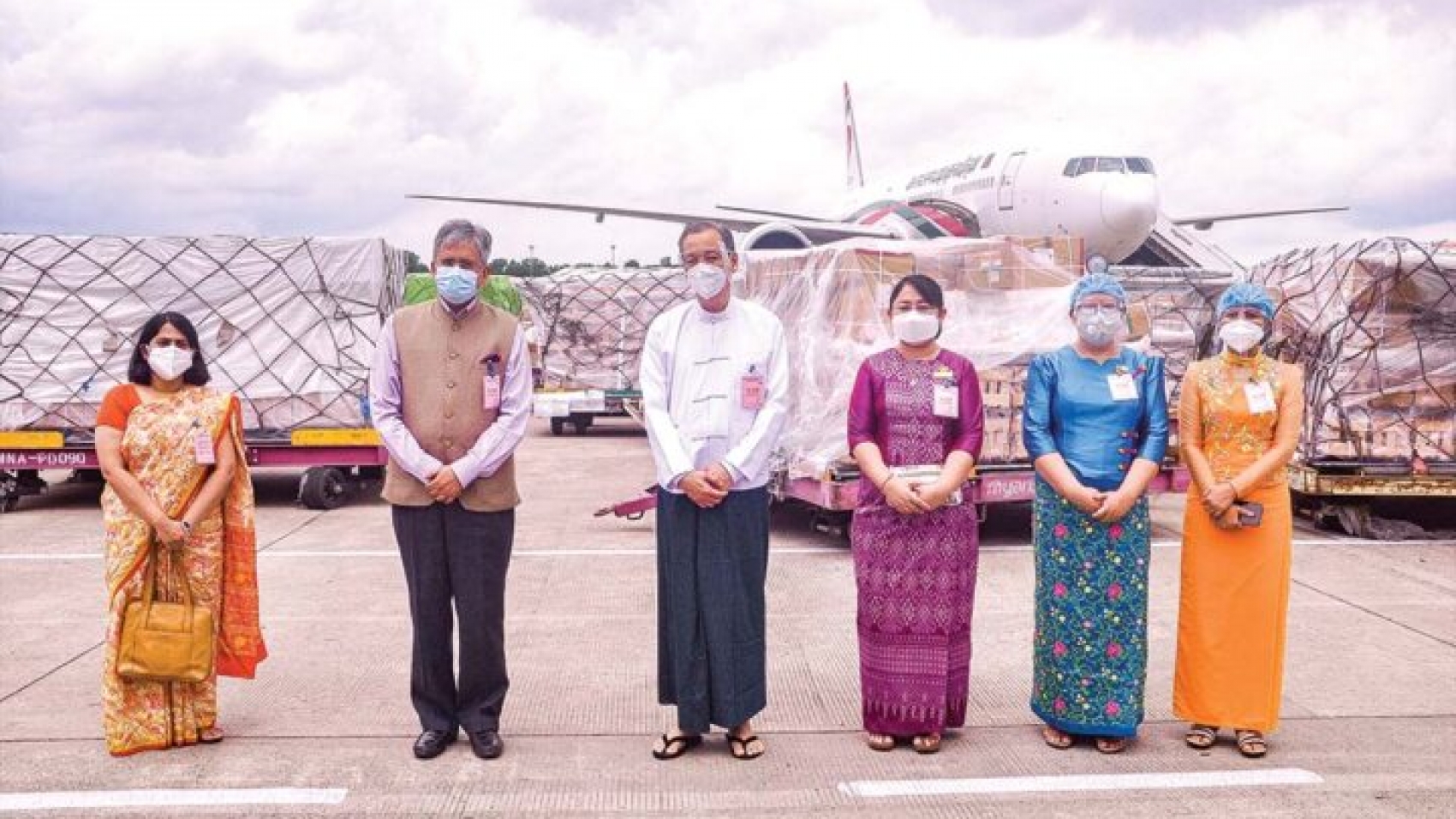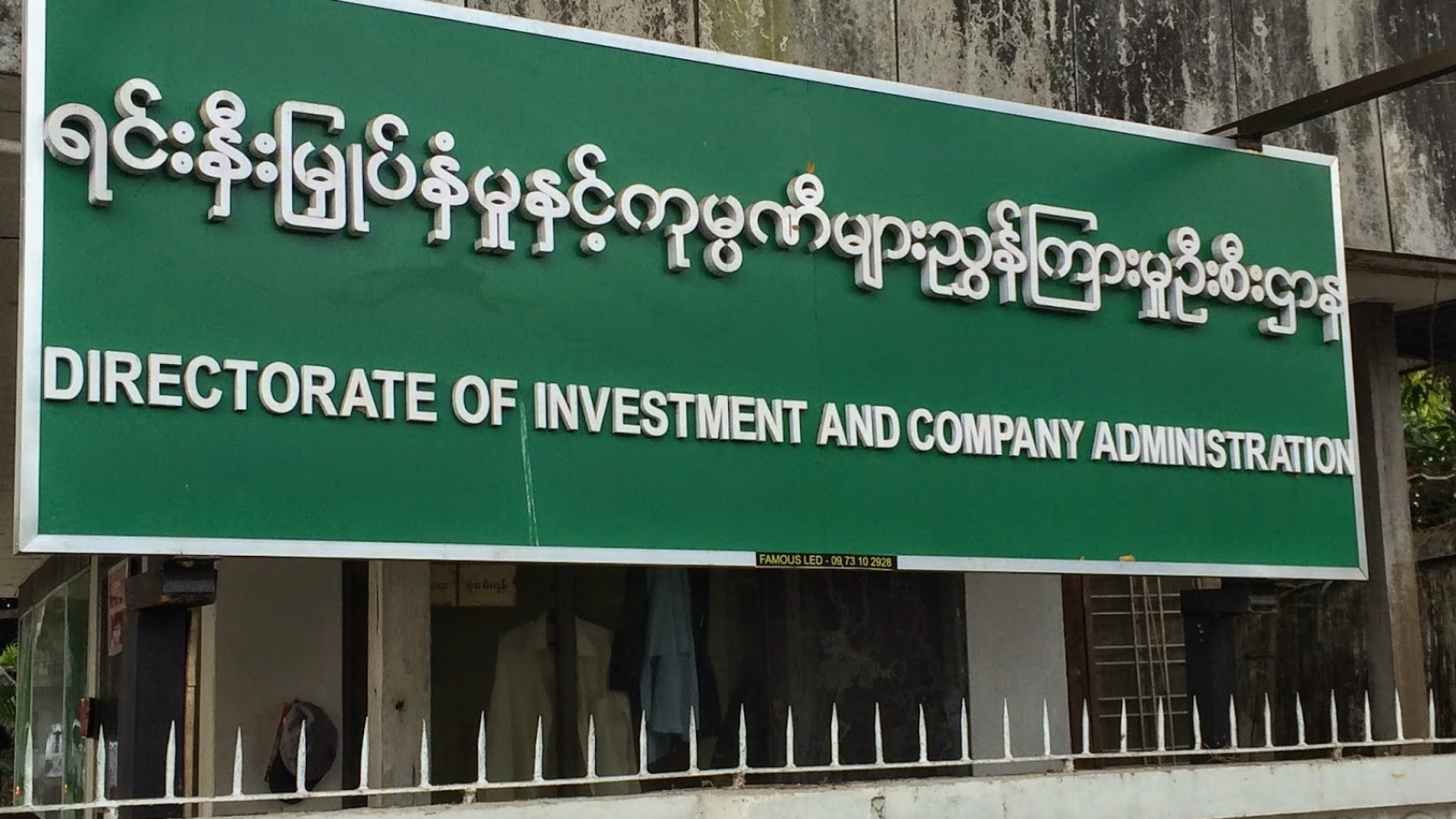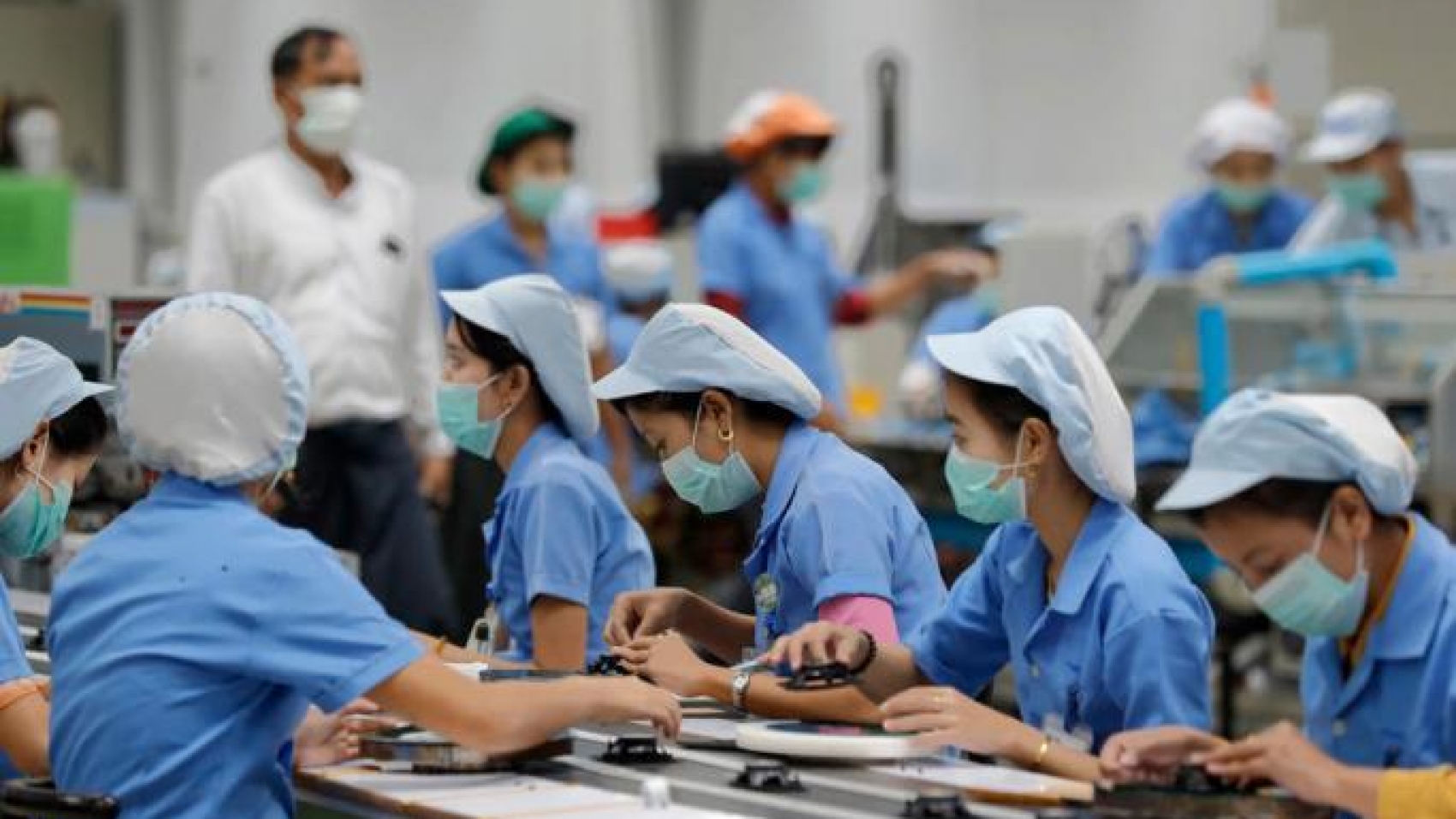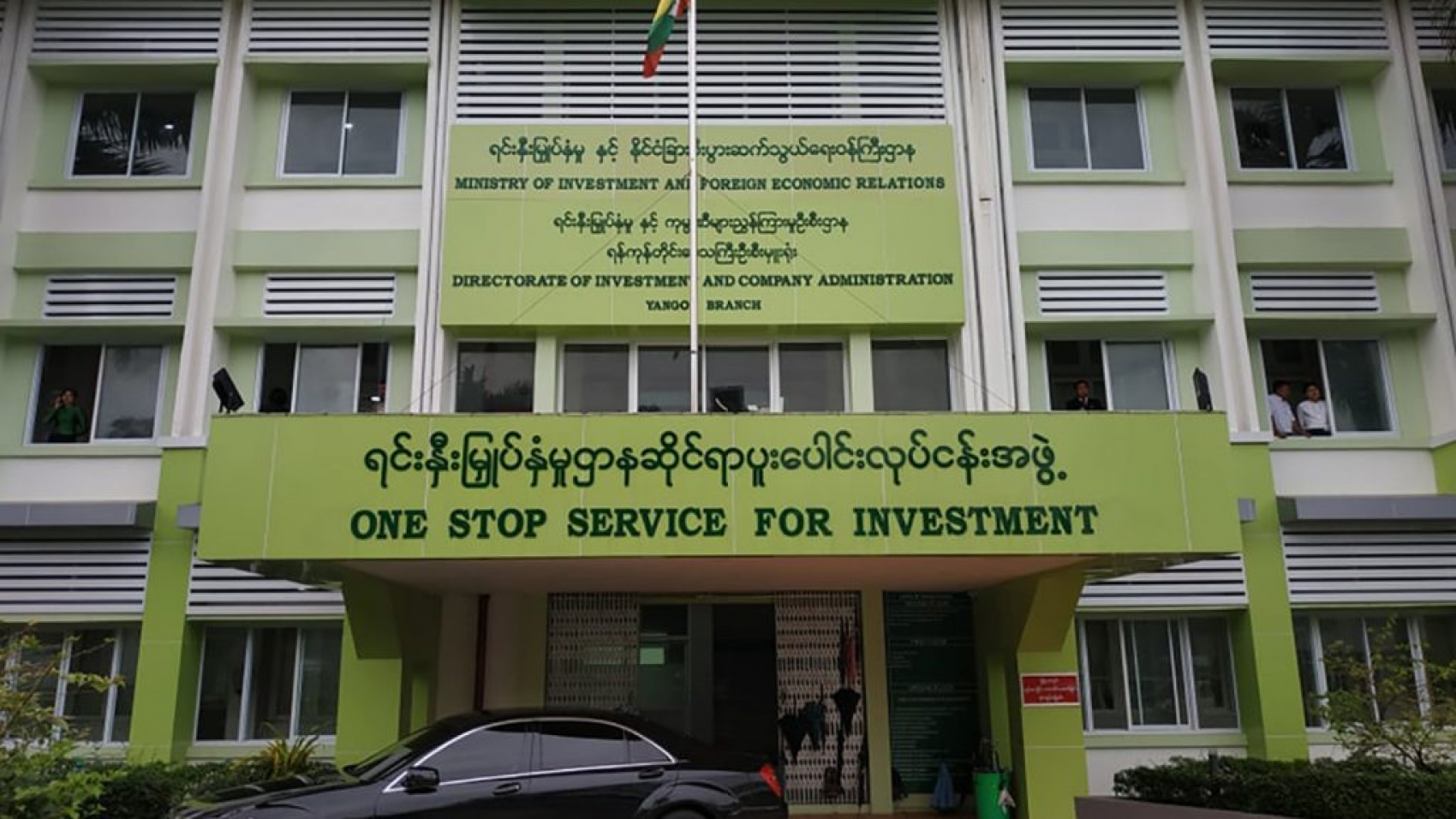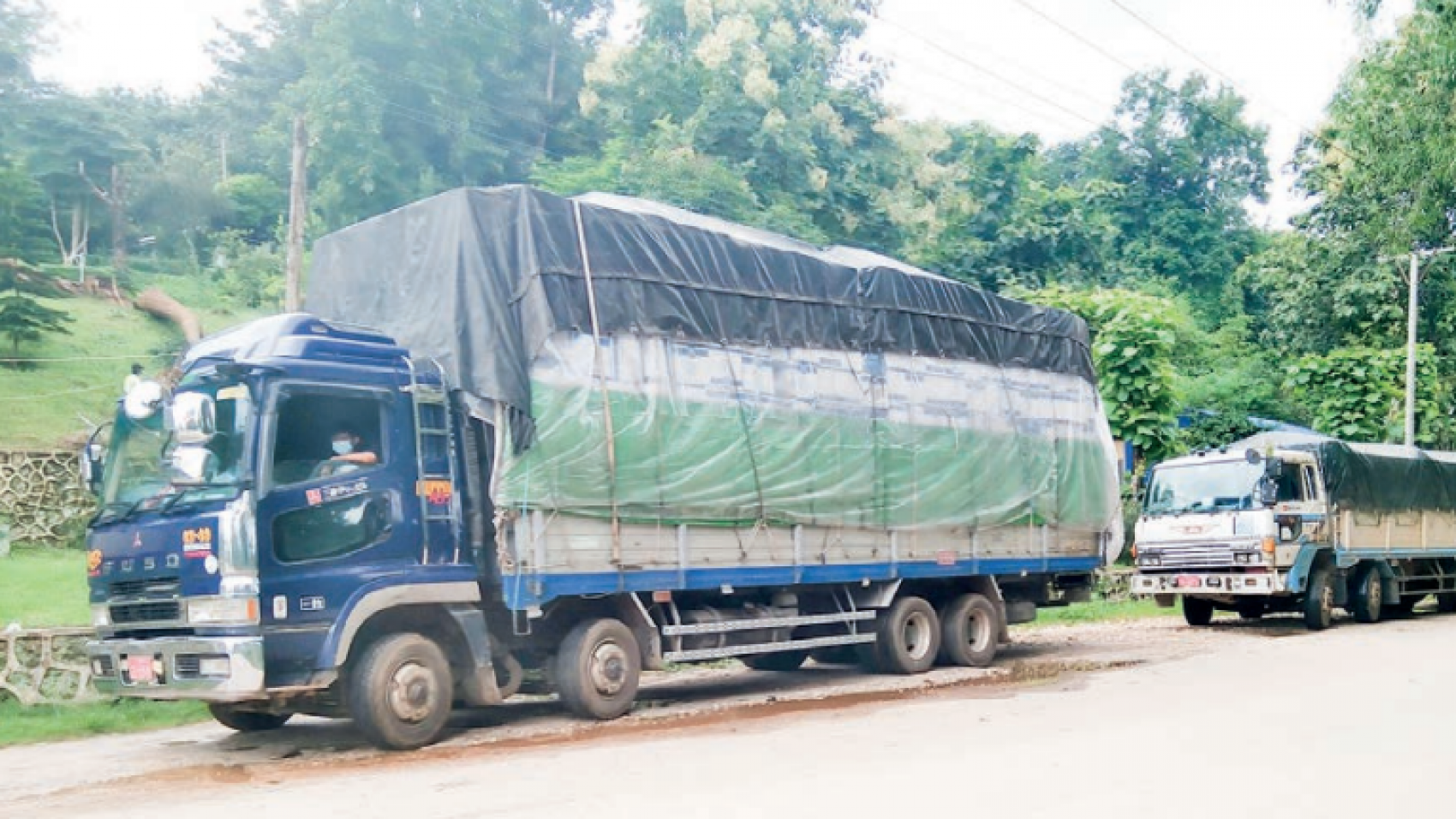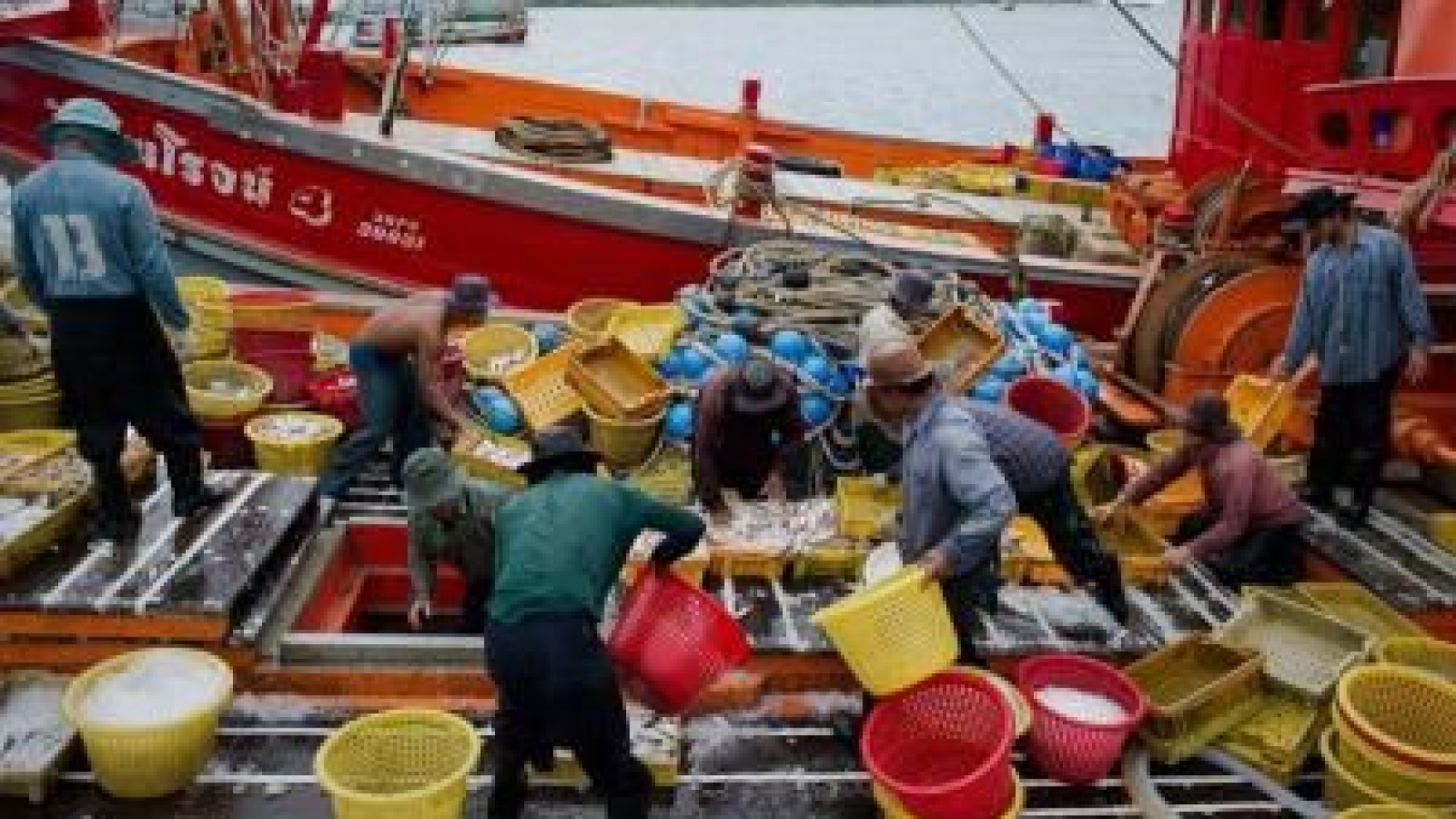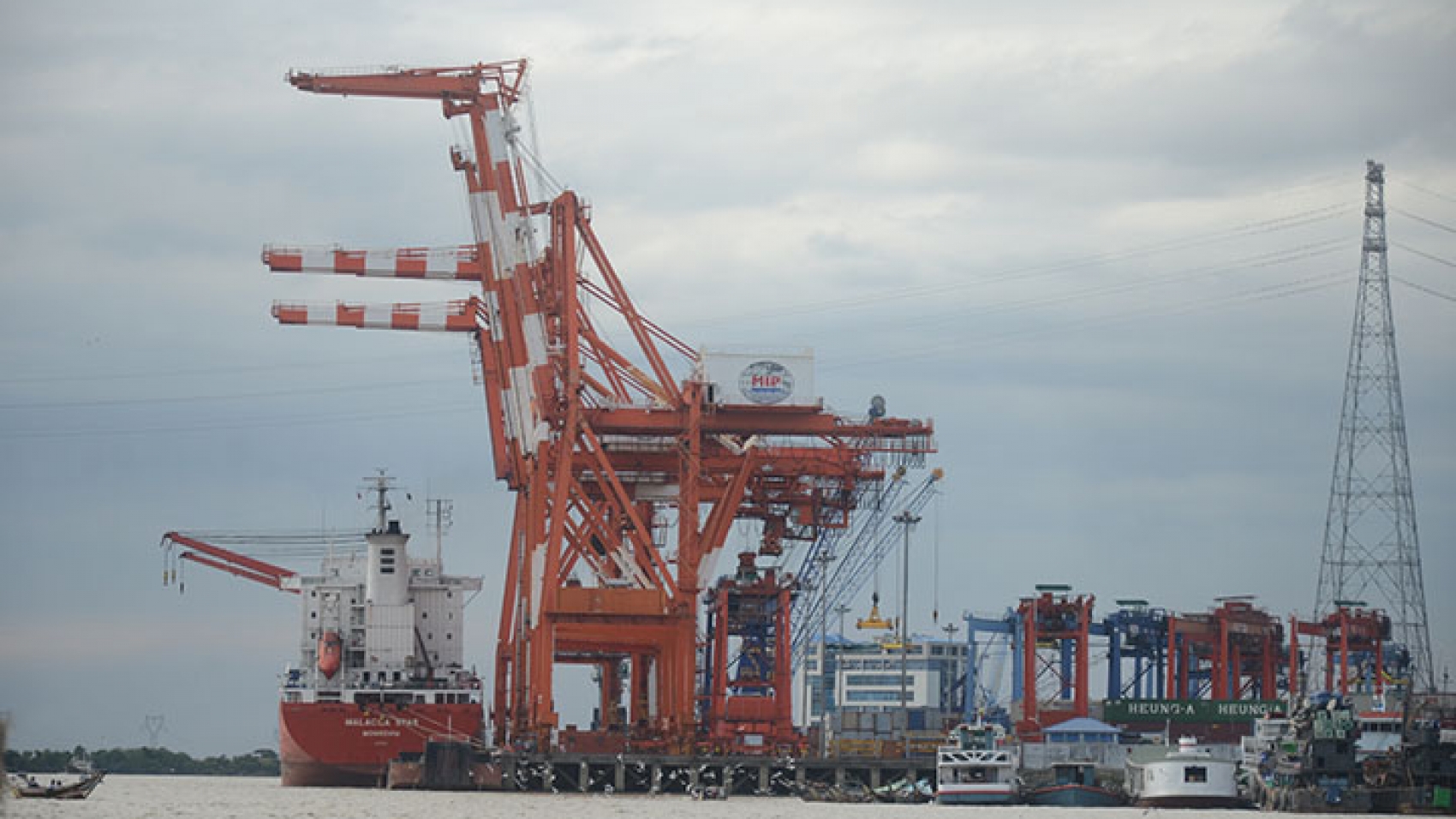The special flight carrying anti-COVID-19 medicines and related materials donated by the Indian government arrived at the Yangon International Airport yesterday. Indian Ambassador to Myanmar H.E. Mr Saurabh Kumar handed over the materials to Director-General Prof Dr Zaw Than Htun of Medical Research Department and Deputy Director General Dr Thidar Hla of Medical Services Department respectively.
The donation included 50,000 Long Surgical Glove (Elbow) sizes 5 and 7, 1,500 Examination Gloves, 570 Digital BP Cuff, one Portable X-ray 100MA, 14,400 KN-95 Medical Mask (GP 19083), 2,000 rapid Antigen Test Kits, 100 Highflow nasal cannulas (HFNC), 292 Body Beds, 1,240 PPE Coverall, 300 Pulse Oximetre (finger Tip), 24 Oxygen Concentrators, 1,600 Apron and 400 Empty Oxygen Cylinders (40-50) LTR.
The Indian government donated eight types of medical equipment weighing more than five tonnes to Myanmar on 15 August and the current second batch of 40 tonnes of medicines yesterday, and they will continue provide third batch of donations, according to the Ministry of External Affairs of India.
Source: The Global New Light of Myanmar

